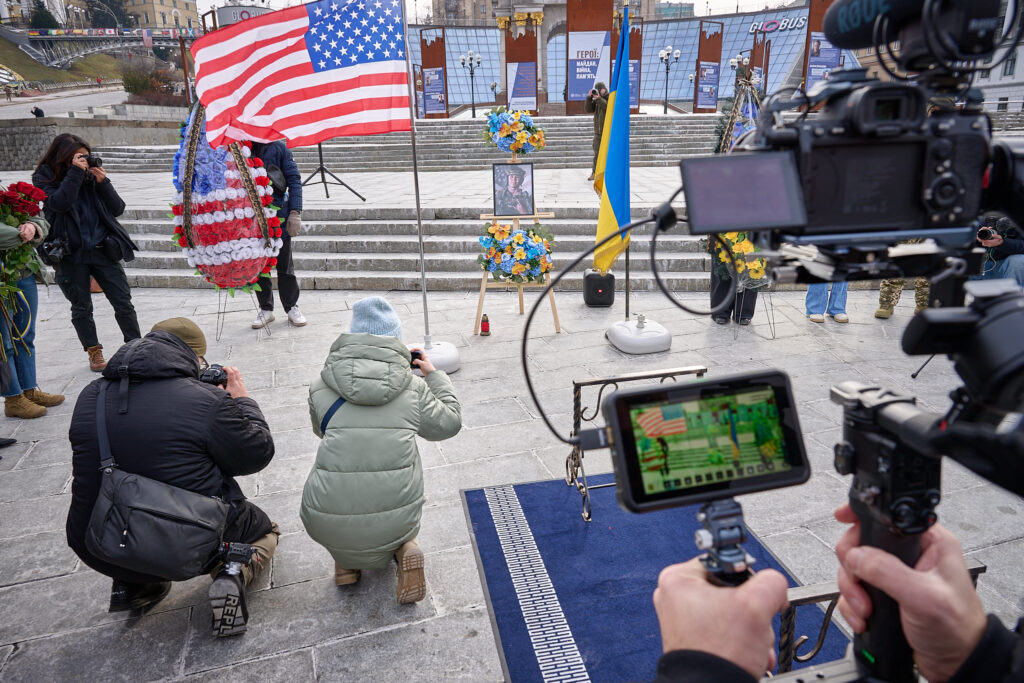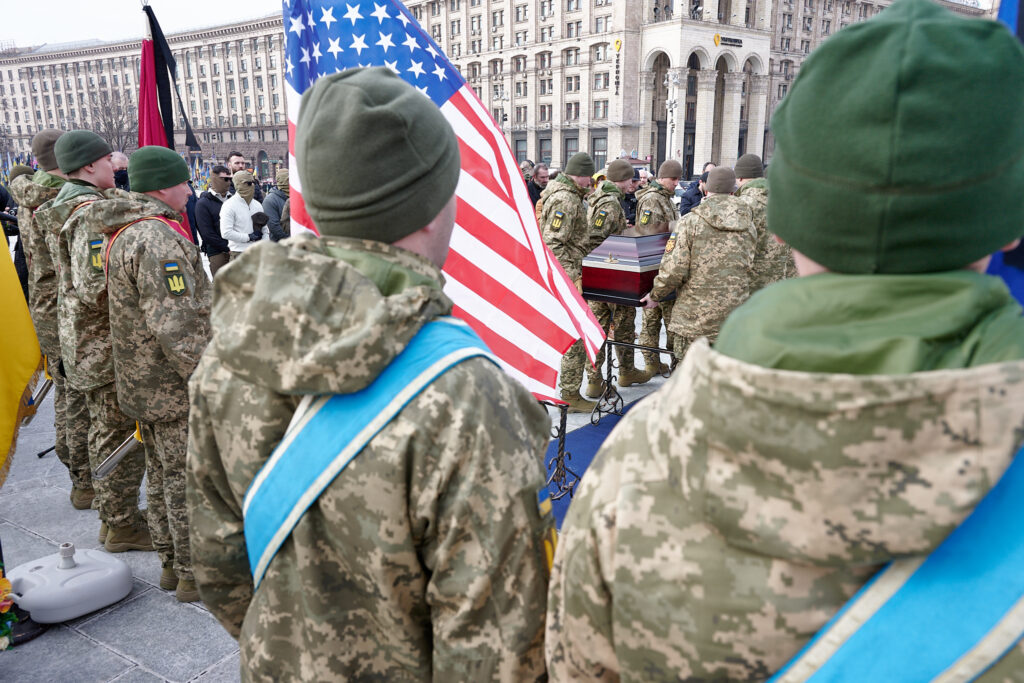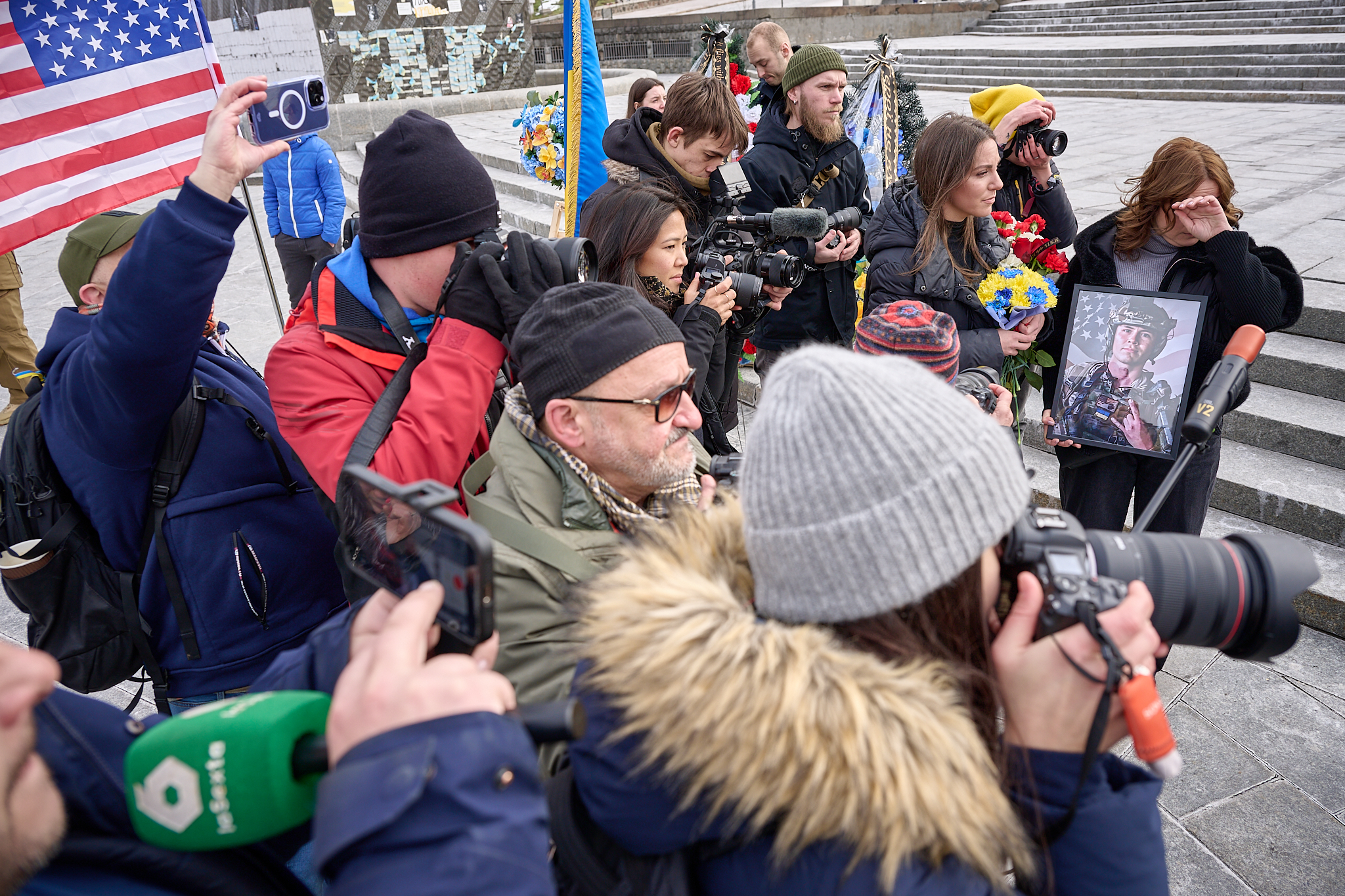It was here that I first observed it. In Ukraine’s Maidan. A space of resistance. Where the conscience of the masses so often manifests. Where the babushkas stand in their padded thermal coats and knitted headscarves, bracing against the bitter cold of the Slavic winters. Hunched over flags bearing the faces of their dead children. Lives erased too soon, sacrificed for the ambitions of men in suits a thousand miles away.
There was a funeral on this day. He was American. Twenty-one. Another glory-seeker, no doubt. A poor soul led by blind conviction into the unrelenting meat grinder. Convinced freedom could be found through some emblematic conquest. His eulogy said he had failed to join the Marines back home. Medical reasons. Ukraine had given him the opportunity to wear the character armour. Now he lay in a coffin, dead in a foreign war.
But that’s not the point of this piece. Because of all the emotions I could have felt that day, none were as overwhelming as disgust and indignation. Not because of the boy’s naive corpse. But the pageantry of the spectacle that unfolded around it. And I was disturbed too. Ashamed to be part of it.

It was a grotesque display of everything I despise about photography. And about those who call themselves photographers. More glory-seekers. Just using different tools.
Some even went so far as to play dress up in exactly what you’d expect the BBC wardrobe department to choose for their latest fictional series, “War Photographer”. An explicitly outward display of the desire to be seen as one in the eyes of others. Instead of making meaningful photographs.
We all have a job to do. But so do hookers—and fentanyl dealers. What unfolded there was not journalism; it was flies circling rot. Feeding on grief at a funeral that should have demanded dignity. A moment of silence. Restraint. Respect for the family. And the dead warrior.
The weight of the press mob was overbearing. The sheer number dwarfed the deceased soldier’s comrades. Five to one. Good odds in any fight. But his comrades remained, poised, with discipline, despite it all. Faces rightly obscured by balaclavas.
Nevertheless, around the unshifting human foundation of morally valid attendees, the shutters continued to snap at machine-gun pace. Elbows jostled aggressively for position, each photographer fighting for the cleanest shot of whatever developments unfolded.

When the courage was mustered, the boy’s mother presented herself fourth from behind her terminal grief. The devastated parent, eyes red and sodden, began addressing the crowd.
Identifying this new point of interest, the press instantly swarmed closer. Like a wolf pack encircling its prey, the cameras moved in. Until the lenses sat almost directly beneath her running nose.
These were predators masquerading as documentarians. No respect. No distance. Just the desperate hunger to capture pain and sell it as truth.
I had come to Ukraine to make photographs. But not like this.
It was at this propaganda event that I realised: I couldn’t be that kind of photographer. The kind who feeds off grief, who trades in spectacle, who mistakes proximity for purpose.
The worst part was how many of them wore press passes. A literal go-anywhere, embed-with-any-unit card. Something I long for. And yet, there they were. Safe. Comfortable. Circling grief in central Kyiv, far from the frontlines they claimed to cover.

